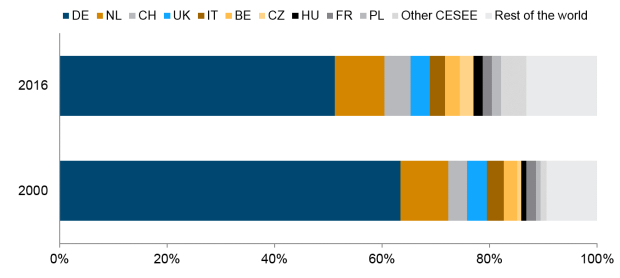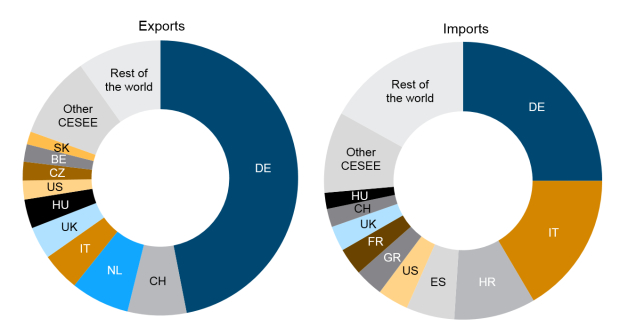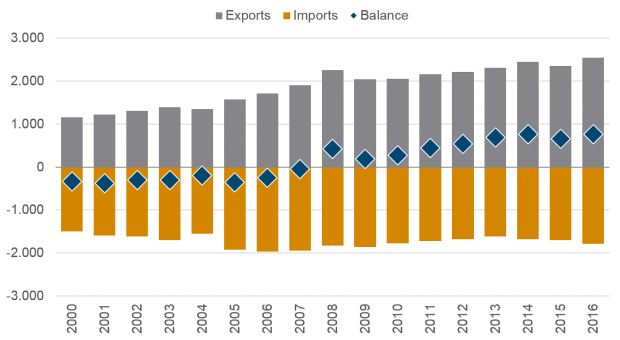Increasing importance of CESEE in Austrian tourism
30 August 2017
A record number of overnight stays points towards a successful season for the Austrian tourism sector. The fastest growth in tourism numbers was recorded from Central, East and Southeast Europe.
A commentary by Julia Grübler
The Austrian tourism sector is heading towards the conclusion of a very successful summer season. According to the latest press release from Statistik Austria (28 August 2017), 35.9m overnight stays were registered during the first half of the summer season (May-July) 2017, an increase of 4.4% compared to last year and the highest total since 1992. The number of overnight stays of Germans increased by an impressive 6.8% to 12.9m.
However, the highest increases in overnight stays compared to last year all came from countries in Central and Eastern Europe (CESEE). Arrivals from Russia (+31.5%), Poland (+15.8%), Romania (+11.3%) and Hungary (+9.5%) rose particularly strongly. The especially sharp increase in the number of tourists from Russia this year partly reflects favourable base effects; arrivals from Russia fell heavily in previous years as its economy suffered from the low oil price and the weak rouble.
The increased importance of countries in CESEE for the Austrian tourism sector is not an entirely new phenomenon. Although the number of German tourists in Austria rose by 320,000 between 2000 and 2016, their share in the number of overnight stays dropped by 12 percentage points. During the same period, the number of stays by guests from CESEE increased by 7.9 million.
Overnight stays of foreign visitors by country of origin
Top 10, Shares in % (Ranking 2016)

Notes: Details in Table III/1.2 of our Research Report. Data Source: Statistik Austria.
In absolute terms, Austria’s neighbours – and in particular Germany – continue to play a pivotal role for the tourism sector. 47% of total tourism exports and 25% of tourism imports can be attributed to Germany. In the top 10, CESEE countries are represented by Hungary (3.4%), the Czech Republic (2.2%), and Slovakia (1.5%) on the export side and by Croatia (9.5%) and Hungary (1.9%) on the import side.
Austrian Tourism exports and imports
Top 10, Shares in % (Ranking 2016)

Notes: BMP6 Methodology. Details in Tables II/3.1 and II/3.2 of our Research Report. Data source: OeNB.
Tourism provides the biggest contribution to Austria’s services trade surplus. Measured as a share in total Austrian services trade, business services take the lead with 43% of all exports and 50% of all imports in 2016, followed by the transport sector. However, the highest positive trade balance (EUR 8.8 bn. in 2016) was attributable to the tourism sector. Looking only at CESEE countries, the trade balance turned positive in the year of the global financial crisis and has remained positive with a visible upward trend since then.
Austrian Tourism trade balance with CESEE countries
Top 10, Shares in % (Ranking 2016)

Notes: BMP6 Methodology. Details in Tables II/3.1 and II/3.2 of our Research Report. Data source: OeNB.
The record in overnight stays this summer is a blessing for employment. With more than 340,000 employees in the tourism sector in 2015, of which more than 290,000 people provide accommodation and food services (Eurostat), a continuous rise in people traveling to Austria is general good news for the Austrian economy, says Michaela Reitterer, president of the Austrian Hotel Association (Ö1 Morgenjournal, 29.08.2017). However, she cautioned that the picture is not uniformly positive: First, the tourism sector is finding it increasingly difficult to find staff to meet extra demand. Second, with tourism numbers rising so quickly, there is the need for a strategy to maintain a high level of service quality.
